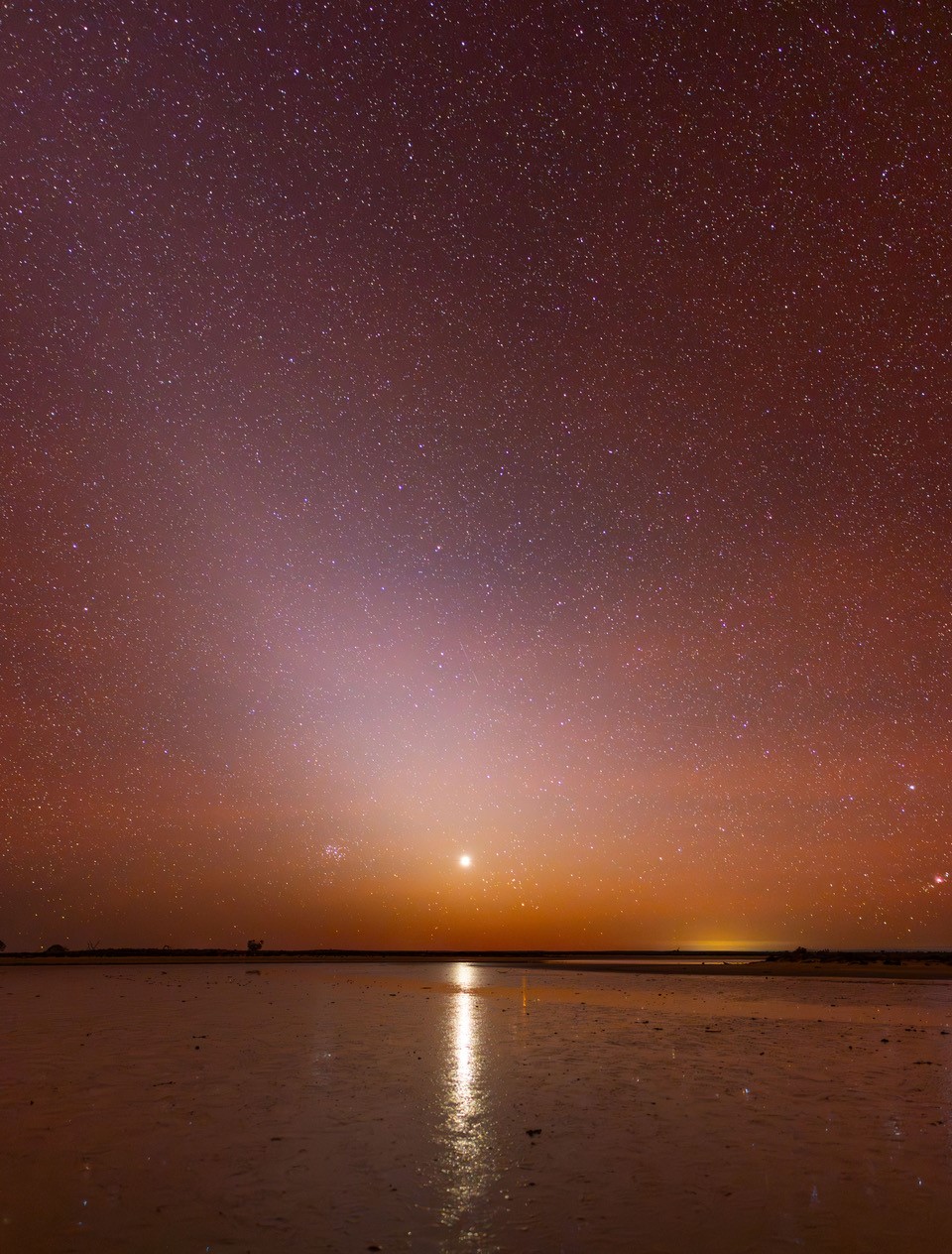Venus is at its brightest right now. Here’s a photographer’s tips to getting the perfect shot

Passing between Earth and the Sun in August, Venus appears large but is hard to see with its sunlit side facing away. Having now risen out of the solar glare, Venus has moved ahead of Earth,” explains astronomy expert, Glenn Dawes. “As it moves away from us, it appears to shrink, and the phase grows as its more daylight side becomes visible.”
Best seen just before dawn, looking low in the east, our sister planet will get higher as the the weeks pass.
To help you capture this stunning sight award-winning Australian photographer and Nikon Creator, Will Eades, has pulled together his top five astrophotography tips:
1. Learn the night sky and plan your shot:
The earth, the planets, and the stars are all moving constantly. Right now, Venus is in close proximity to Earth and lights up the pre-dawn sky. Using apps like Sky Guide can help you plan your shot and see where Venus will be positioned in the sky at any given time.
2. Composition:
By using positioning apps, like Sky Guide, we can use virtual reality to see where the milky way or other astronomical objects will be positioned relative to your foreground at any given time. Try to get an interesting foreground in frame to really make your image stand out. Venus is so bright that it will add a nice counterpoint to a wide field image too.
3. Forecasting:
For the casual shooter, forecasting can be done using any weather app. Simply look at the forecast for the week ahead, check more dedicated apps like Windy to get a forecast of how clear the skies are predicted to be when you are planning to go out. Aim for clear skies if you can, but an early morning haze might add to the image due to how bright Venus is.

4. Focus in the dark:
In years gone by, I found the most reliable method for focusing in astrophotography was to manually focus. This would involve turning your focus ring to infinity and then dialing it back ever so slightly. While this still works, it can be hit and miss, time consuming, and really tricky at ultra-wide focal lengths as your subject will appear tiny in the viewfinder. The focus peaking feature of the Nikon Z system EVF really helps here. Focus peaking works by detecting edges of highest contrast in your scene (and therefore most in focus) and highlighting them in a bright color. This can be found in Custom Settings Menu – a13 and will cause the stars to become bright red pinpoints when they are in focus.
Low Light Autofocus is another handy feature that I use on my Nikon Z 7, enabling it to lock onto a star. Low Light Autofocus uses longer shutter speeds to gather light, creating a brighter image preview to help the autofocus system lock on in dark environments. This feature is found in Custom Settings Menu – a11.
Even more amazing is the Nikon Z 9’s new Starlight View Mode, which turns your view from night into day and is an absolute game changer for both manual and auto focus in low light. This feature provides 2 extra stops of detection, – 8.5 EV vs -6.5 without. You can find this feature in your Custom Shooting Menu – d9.
5. Settings:
Shooting Venus in a wide field image you would normally use a wide aperture to capture as much light as you can in the night sky. But because Venus is so bright, you can also try stooping down your aperture to create diffraction spikes and make Venus really stand out in your image. Use a tripod for longer exposures of the sky as this will bring out some magical colours at pre-dawn and don’t be afraid of high ISO’s to bring out the fainter details in the milky way.


